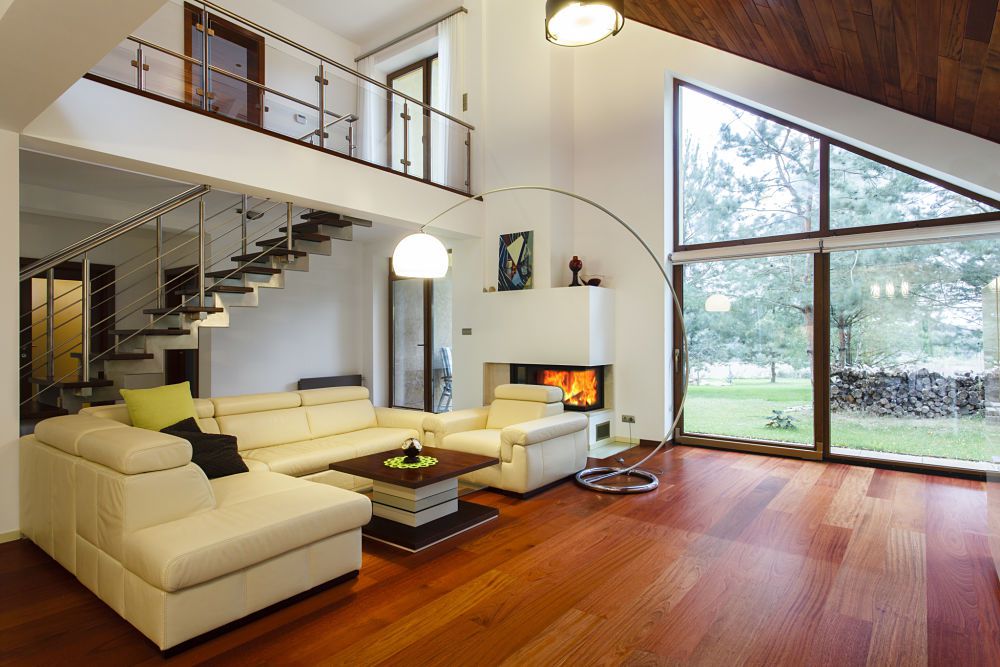The best long-term strategy to reduce operational and maintenance costs is through sustainable design and business practices. These strategies include passive thermal and solar design, high efficiency HVAC, lighting, durability, water efficiency, and green building practices. When other options are unavailable to optimize cashflow, reducing expenses through efficiency is a sensible option. If you’re taking preventative measures early by implementing green design as soon as you acquire the property, you’ll be set for long-terms savings. These sustainable approaches are equally effective in reducing short-term expenses.
Passive Thermal Design and High Efficiency HVAC
If you’re renovating the property or building new, passive thermal design is a strategy that results in minimal implementation expenses and the lowest energy costs. The passive design approach takes into consideration the orientation of the property in relation to the Sun. By structuring the features and improvements of the structure to either absorb or reflect heat, depending on the heating and cooling needs of the occupants and season, it reduces the need for mechanical heating and cooling systems and allows the use of lesser capacity systems.
This design methodology includes using natural ventilation to improve air quality, as well as to regulate temperature and humidity. Many of these concepts are ancient in origin and were developed when there was no access to HVAC technology. When combined with passive features, HVAC systems can achieve much greater efficiency. A tight building envelope that is properly insulated and sealed retains heating and cooling and reduces system run-time. Zone-based heating and cooling systems that allow only the occupied spaces of the home or work space to be temperature regulated also contribute to reduced energy costs.
CFL/LED Lighting, Daylighting, and Photovoltaic
A solution to reducing expenses that can offer immediate savings at a relatively low cost is energy efficient lighting. Most conventional fixtures can be retrofitted with CFL or LED bulbs without any modification, resulting in low implementation costs. As these lighting formats have become the standard in the building industry, the cost of energy-efficient bulbs and fixtures has decreased dramatically over the last several years. Occupancy sensors and lighting timers are an excellent low-cost complement to energy efficient lighting. Occupancy sensors turn lights off automatically when no one in the room in moving.
Daylighting is another passive design strategy that uses windows, light tubes, and other light-directing fixtures to bring natural light to the interior and minimize the need for artificial light. Photovoltaic systems are another technology that have become more economical for investors to consider. As the cost of panels and controllers has dropped, the initial investment has declined, while increasing energy costs have hastened the payback period.
Reducing Expenses with Durable and Low VOC Materials
Investing in durable and low volatile organic compound (VOC) materials keeps maintenance expenses low and improves the appeal of the property. Durability reduces tenant-requested repairs and the time and management expense associated with them. Durability for indoor materials is typically an issue for flooring, counters, walls, and appliances. On a structural level, quality building materials will increase the functional and economic life of the property. Structures that maintain their functional utility and value have longer service lives and result in longer tenant leases and less need for new construction.
VOCs are a hot-button issue for sustainability savvy tenants and buyers. The presence of VOCs is typically very apparent by the odor and will quickly deter potential buyers and renters. VOCs are known to cause respiratory irritation, asthma, and other malignant conditions, and has the potential to be a source of litigation. A large share of materials available today have low toxic emissions, resulting in lower than historical prices for sustainable materials.
Water-Efficient Landscaping and Indoor Water Use
This is another strategy for reducing expenses that can be quickly implemented at a relatively low cost. Water efficient landscaping is often termed ‘Xeriscaping.’ Xeriscaping takes advantage of the tolerance to natural threats of native and adaptive vegetation. Native plants require very little water and are naturally resistant to pests and drought. An additional benefit of natural plants is their tolerance to indigenous weeds, resulting in lower landscape maintenance costs.
Onsite water collection using cisterns and other rain harvesting technologies allows the accumulation of water for off-season irrigation and toilet flushing. Low-flow fixtures throughout a rental property, including faucets, toilets, showers, and irrigation can drastically reduce water expenses and the energy used for pumping in its transfer.
Green Business Practices for your Investment Business
If you manage your own properties or have staff that work for you, going green in the office will improve your bottom-line and support the environment. Within the office there are numerous opportunities to eliminate paper waste, use efficient lighting, select Energy Star rated computers and printers, and encourage employees to use public transportation. Being sustainable in your business supports not only the financial health of your business, but also the human element. Workspaces with good IEQ foster the physical and emotional health of employees and support productivity and creativity in the workplace.
For pragmatists, sustainable practices and design features can earn financial incentives from local planning and national regulatory agencies. Grants and tax credits can help offset the initial cost to implement green strategies and equipment. Incidentally, sustainable practices inherently support the community and build goodwill for businesses that follow them.
Net Effect
Reducing expenses is an ongoing concern for investors looking to develop the maximum cash flow from their operations. While there are a number of strategies to reduce expenses that don’t involve improvement to energy efficiency or durability, sustainability is the simplest and has the greatest overall long-term benefits for investors. Considering these at the outset of the acquisitions process, and throughout the lifecycle of the project and property, offers the greatest expense reduction and positive net effect on the environment.


